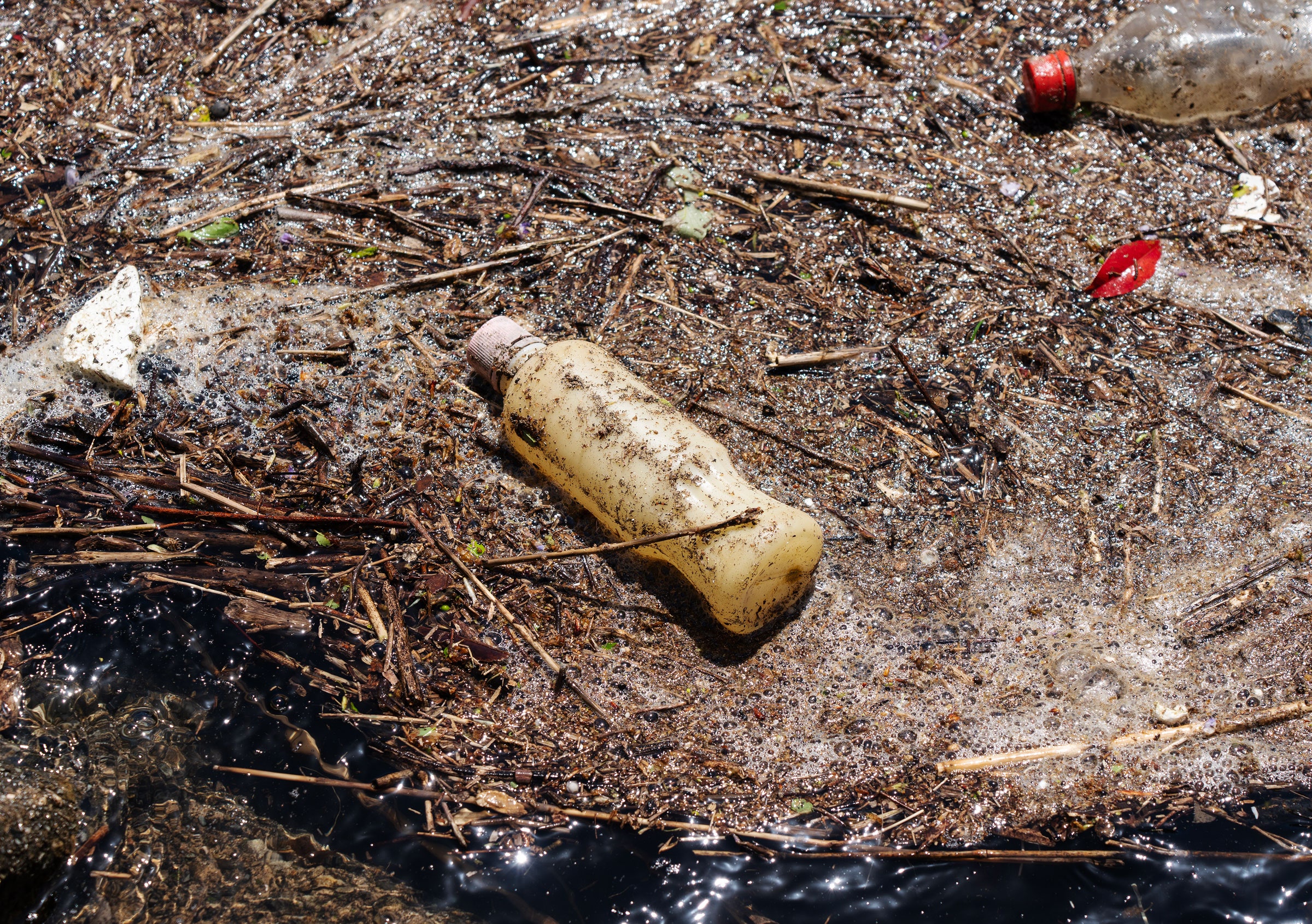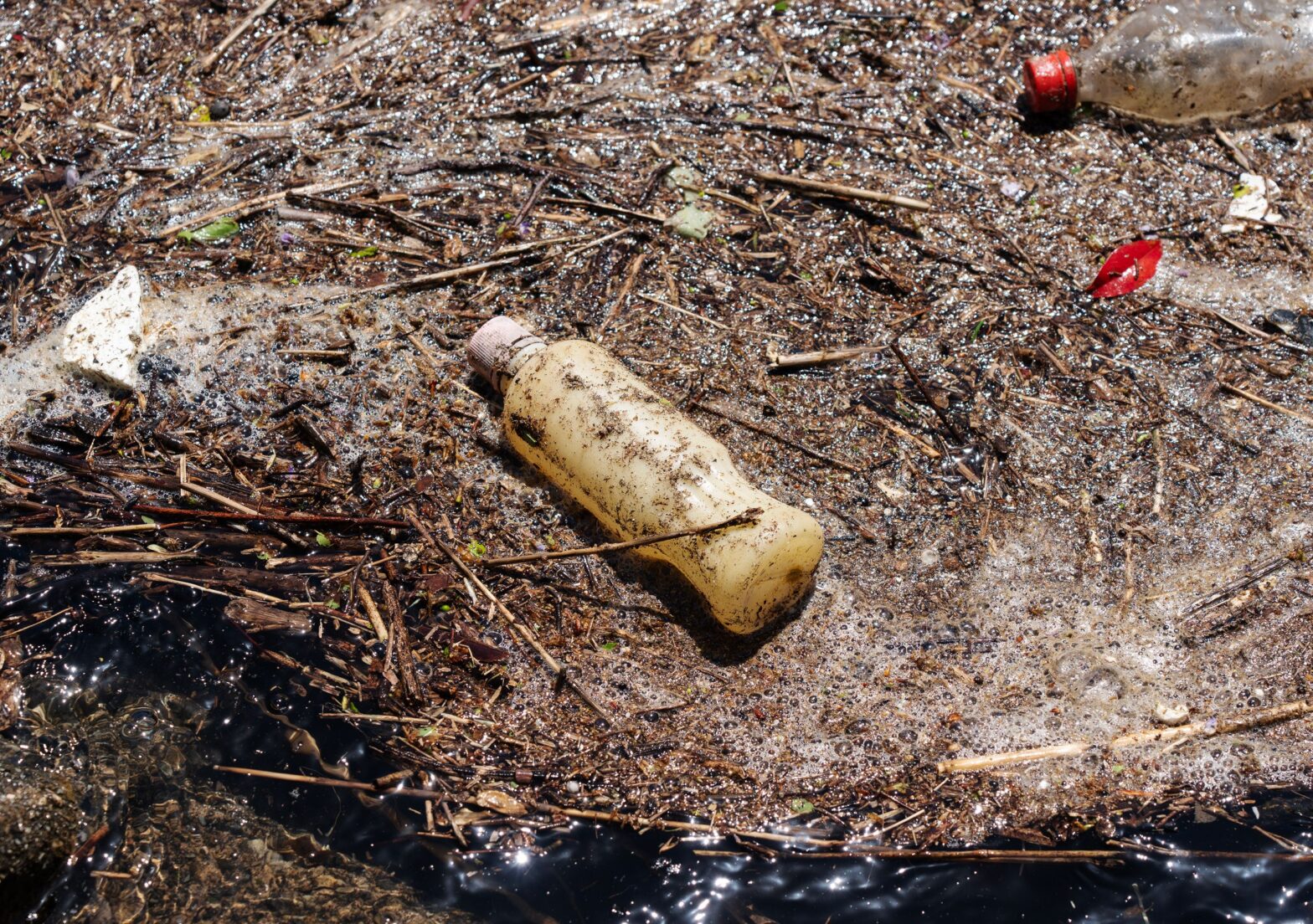
The problem is massive, demoralizing, and ostensibly impossible to fix. But today the United Nations Environment Programme (UNEP) is dropping an urgent report on the extraordinary environmental and human costs of plastic pollution, along with a road map for the world to take action. With several strategies working in concert—like production cuts and more reuse of plastic products—the report finds that humanity might reduce that pollution 80 percent by 2040. The road map lands just weeks ahead of the second round of negotiations for an international treaty on plastics, which scientists and antipollution groups are hoping results in a significant cap on production.
View more
The report emphasizes the devastating price of our civilization’s addiction to plastic, “particularly when it comes to human health costs of plastics—so endocrine disruption, cognitive impairments, cancers,” says Steven Stone, deputy director of the Industry and Economy Division at the UNEP and a lead author of the report. “When you take those along with the cleanup costs of plastic pollution, you get in the range of $300 billion to $600 billion a year. This report is a message of hope—we are not doomed to incurring all of these costs.” In fact, the report notes, with action on plastic pollution, we might avoid $4.5 trillion in costs by 2040.
This road map builds on another alarming report the UNEP released earlier this month, which found that of the 13,000 known chemicals associated with plastics and their production, at least 3,200 have one or more hazardous properties of concern. Ten groups of these chemicals are of major concern, such as PFAS and phthalates. Of particular toxicity are a wide range of chemicals in plastics with endocrine-disrupting properties, which short-circuit the hormone system even in very low doses, leading to obesity, cancer, and other diseases. “There are these costs that are going to manifest in human health, in environmental destruction, in marine litter pollution,” Stone says. “Those are costs that fall on everyone. But the consumer of plastic doesn’t take pay for it, neither does the producer. So that’s a massive market failure.”
Plastic is, at the end of the day, a highly toxic material that’s infiltrated every aspect of our daily lives. The goal above all others should be to stop manufacturing so much of the stuff, so the new road map calls for eliminating unnecessary plastics, like the single-use variety. But the challenge is that plastic remains absurdly cheap to produce—its many external costs be damned.
“This road map is headed in the right direction but must go much further to curb new plastics production,” says Dianna Cohen, CEO and cofounder of Plastic Pollution Coalition. “We are glad to see an emphasis on reduction and reuse, which are key elements of solutions to plastic pollution, as these actions can most rapidly help us diminish plastic production. Missing in the report is requiring industrial/corporate entities that produce material items to stop making more toxic fossil-fuel plastic, full stop.”
In addition to reducing production, the report argues, the world must improve recycling systems, which alone could reduce plastic pollution 20 percent by 2040. But recycling in its current form is problematic for a number of reasons. For one, the recycling rate in the United States is now just 5 percent of plastic waste. The US and other developed nations have long shipped millions upon millions of pounds of the plastic waste they can’t profitably recycle to developing countries, where bottles and bags and wrappers are often burned in open pits or escape into the environment.
A core issue is that over the years, plastic products have gotten much more complicated and therefore much less recyclable: Nowadays, food pouches might have layers of different polymers, or a product might be half plastic, half paper. “By agreeing and then imposing design rules that allow, for instance, a limited number of polymers or a limited number of chemical additives that play well within the system, that already improves heavily the economics of recycling,” says Llorenç Milà i Canals, head of secretariat of the Life Cycle Initiative at the UNEP and lead coordinator of the report. “That makes recycling much more profitable because it will take much less to bring those materials back into the economy.”
However, even recycling that’s done properly comes at a huge environmental cost: A study published earlier this month found that a single facility might emit 3 million pounds of microplastic a year in its wastewater, which flows into the environment. The upside, at least, is that the facility would have released 6.5 million pounds of microplastic had it not installed filters, so there’s at least a way to mitigate that pollution. But these tiny particles have now corrupted the entirety of the planet, including a broad range of organisms. And generally speaking, as plastics production is increasing exponentially, microplastic pollution is increasing in lockstep.
In that sense, then, recycling is making the plastic pollution problem worse. “Plastic was not designed to be recycled, and recycling it only reintroduces toxic chemicals and microplastics into the environment and our bodies,” says Cohen. “The [UNEP] report’s authors even go so far to acknowledge that even if it is achievable, a circular economy of plastics would be decades in the making, and even under the best scenario, following the road map as outlined would lead to approximately 136 million metric tons of plastic flowing into landfills, incinerators, and the environment to cause pollution in the year 2040. That is an enormous—and unacceptable—amount of plastic.”
Really, recycling allows the plastics industry to keep making all the plastic it wants, under the guise of sustainability. “If you had an overflowing bathtub, you wouldn’t just run for the mop first—you turn off the tap,” says Jacqueline Savitz, chief policy officer for the conservation nonprofit Oceana, who wasn’t involved in the report. “Recycling is the mop.”
Another strategy highlighted in the new report is “extended producer responsibility,” in which manufacturers don’t just make the stuff and wipe their hands of it. The plastics industry has long promoted recycling (even though it has known that the current system doesn’t work) because it makes you, the “careless” consumer, responsible for pollution. Extended producer responsibility puts the burden back on the industry, forcing producers to, say, implement systems to take bottles back and reuse them.
Additionally, the new report notes, countries might impose a tax on plastic, which would make it more expensive for manufacturers to churn out virgin plastic. Governments would then use that money to fund recycling programs and other mitigation measures to reduce plastic pollution. “The costs that are externalized to society are actually put up front,” says Stone. “And then recycled materials are much more competitive with the virgin materials. That will be a tremendous benefit for keeping plastics in play longer.”
Another way to keep plastics in circulation is to encourage reuse. So instead of having to recycle a single-use water bottle, ideally people would have their own reusable bottles to fill over and over. Instead of buying shampoo in a plastic bottle each time, people might visit refill stores. Combined, such reuse initiatives could reduce plastic pollution by 30 percent, the new report finds. “It does require systems and investment, but it has the potential to be a big economic opportunity,” says Savitz, of Oceana. “New companies could start out small but could end up being sort of the Amazon of reuse.”
Finally, the report calls for a “careful replacement” of certain plastic products—using paper or compostable materials instead, for instance. “Careful” meaning we wouldn’t want to widely deploy some sort of plastic alternative that ends up being just as toxic. This is already a problem, as plastics producers swap out known toxic chemicals, like bisphenol A (aka BPA), for similar chemicals that may be just as toxic, if not more so—a “regrettable substitution,” as scientists call it.
The good news, at least, is that plastic pollution is finally being elevated to emergency status in the international community. “The fact that there is consensus that this is an issue by all countries, to me means we have a tremendous opportunity,” says Stone. “It’s our job to get the science out there so that people can see the numbers and understand what the stakes are right now. Because plastics pollution is a time bomb, essentially, and we need to deal with it now.”

